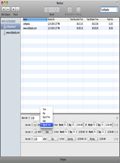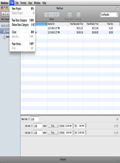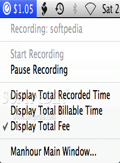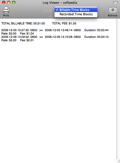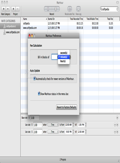Even though during the holiday season all the extra time is meant to be spent with friends and family, not everyone can afford to take a vacation. This is the case especially if you have your own business and, naturally, you need to keep it on the line. Still, special times require special means, so, if you must work extra hours in this period of the year, at least make sure you get your work's worth.
Probably as a response to this situation, Aelgo launched last week a very nice application called Manhour. The software has been designed for everyone that has a "seasonal" job. Not only does it allow you to apply different rates, but it also records how much time you have spent on a certain project.
The Looks
The Manhour main window is divided into three main areas: the Rate Category area, the Project area, and the Rate Editor area. Each time you launch the application, a status bar item is added on the right. This way, not only can you easily access the main window, but you can also modify the current status of the application.
For example, it will show you the name of the last project used and will allow you to start or pause the recording. Thanks to this feature, you can see the Total Fee, the Total Billable Time or the Total Recorded Time just by taking a glance at your status bar. You might think that these are very simple features but I believe this is the strong point of Manhour: it allows you to save the information you need without requiring additional information.
The Works
Before you can start a project, you must establish a Rate Category, which means that you must give it a name and decide on a base hourly rate. Usually, the rate categories are determined by the period of the year. For example, a cameraman working by the hour should have a higher base rate for the wedding season. Following the same logic, a computer specialist will probably have different fees for office hours and extra hours.
That is where the Rate Editor comes to do the job. Pressing the small plus button situated on the right of the Base rate will add a new rate. For each new rate, you must specify the fee and the situation the fee applies. The rate might change considering the date, the day of the week or the time of the day. If you decided to use a different fee for a previously defined period of time, you don't necessarily have to erase the first one because the later rows apply first. Still, you can rearrange and change the priority of a rate just by drag and drop.
The next step is to create a project. For all the projects contained in a certain category, the fees applied are those defined for the rate category. Once you did that, you can start recording by pressing the button situated on the top of the main window. Right next to it, you can see the pause button. In the project panel, for each project, you can see the date and time on which the recording started, the Total Recorded Time, the Total Billable Time and the Total Fee. By default, Manhour is set to bill in blocks of 1 minute but you can refresh the calculation manually by pressing the Recalculate Fee button situated on the top of the window.
For each project, you have the possibility to see a log file by pressing on the View Log button situated right next to the Recalculate Fee button. The Log window provides information about the Recorded Time Blocks and about the Billable Time Blocks, but also gives you the possibility to save the information in a .txt file or to print it directly. The Log displays information about the date, the time the recording started and when it ended it, the duration, the rate and the fee for each session separately. Of course, on the top of the window, you can see the total duration and total fee for a certain project. If you are not sure that the log is up to date, you can press the Refresh button.
You also have the possibility to modify the automatic fee calculation refresh rate by accessing the Preferences window. The same window allows you to enable or disable the Manhour status bar item and the automatic checking for updates feature. In case you don't like the modifications made and want to start all over again, all you have to do is press the Reverse to Factory Defaults button. Manhour also provides a basic search bar situated on the top right corner of the main window that will help you easily find a certain project.
The Good
The Bad
The Truth
Here are some snapshots of the application in action:
 14 DAY TRIAL //
14 DAY TRIAL // 